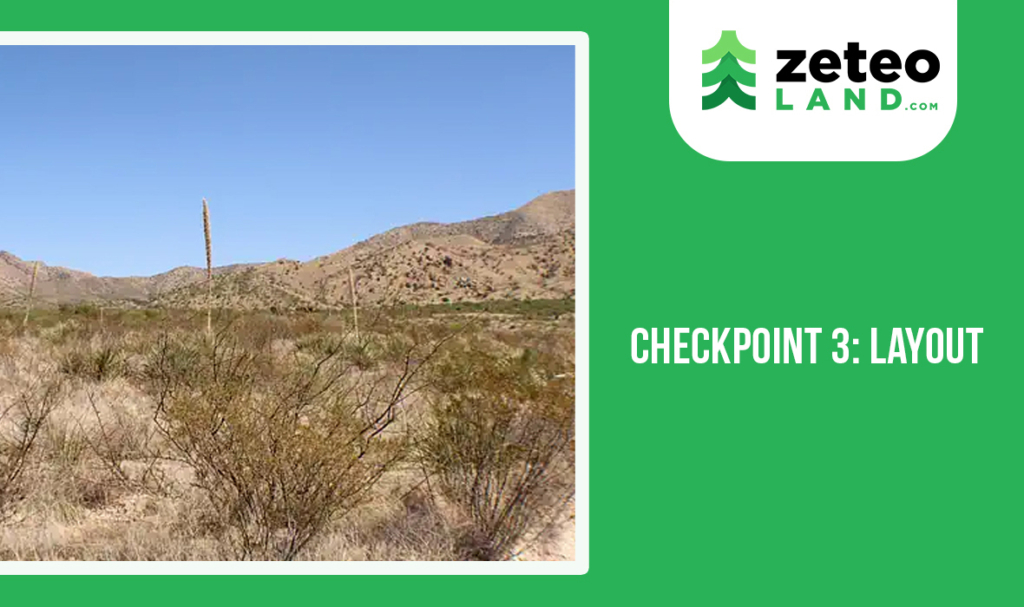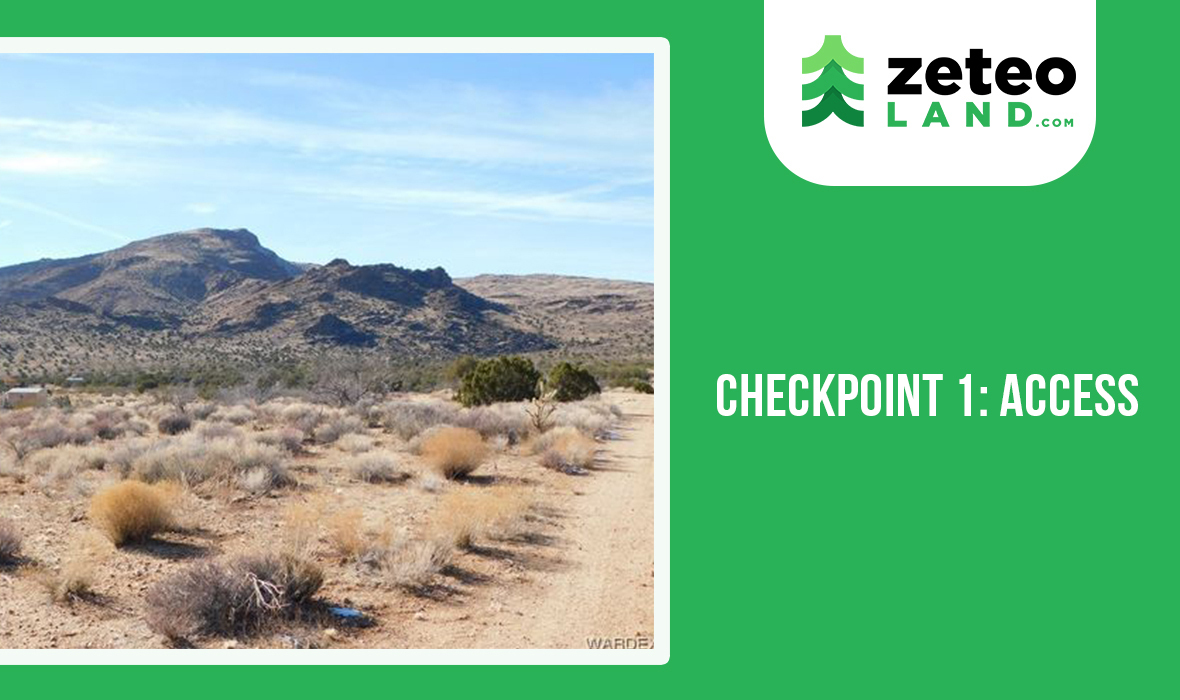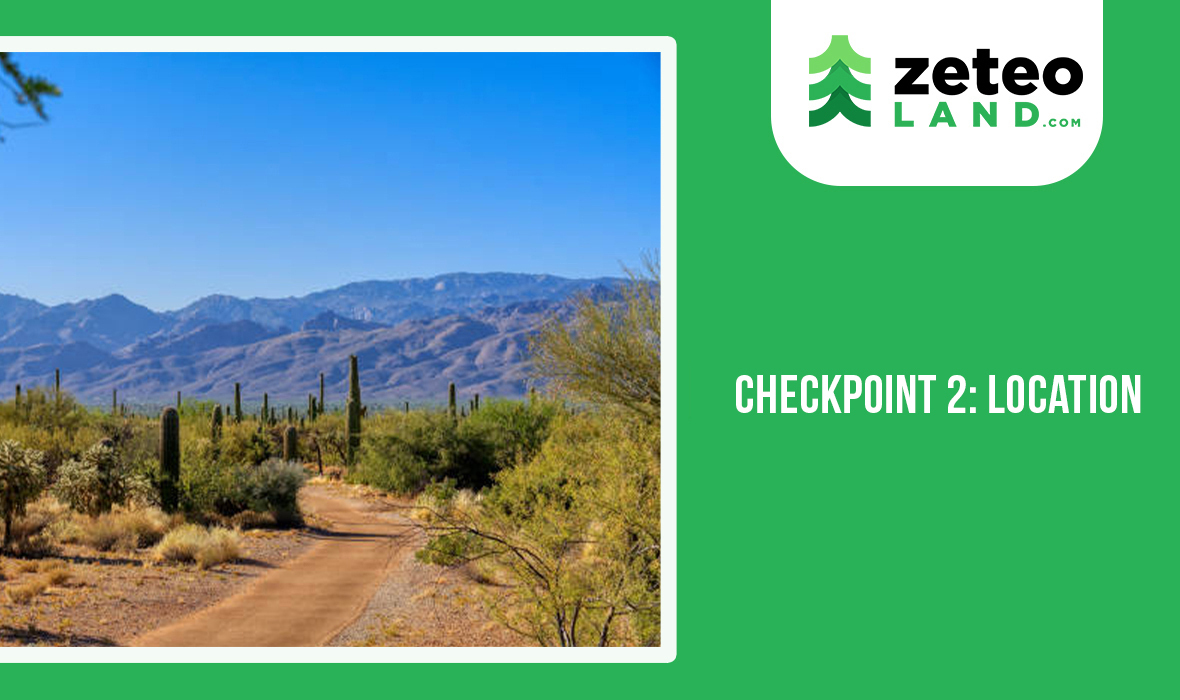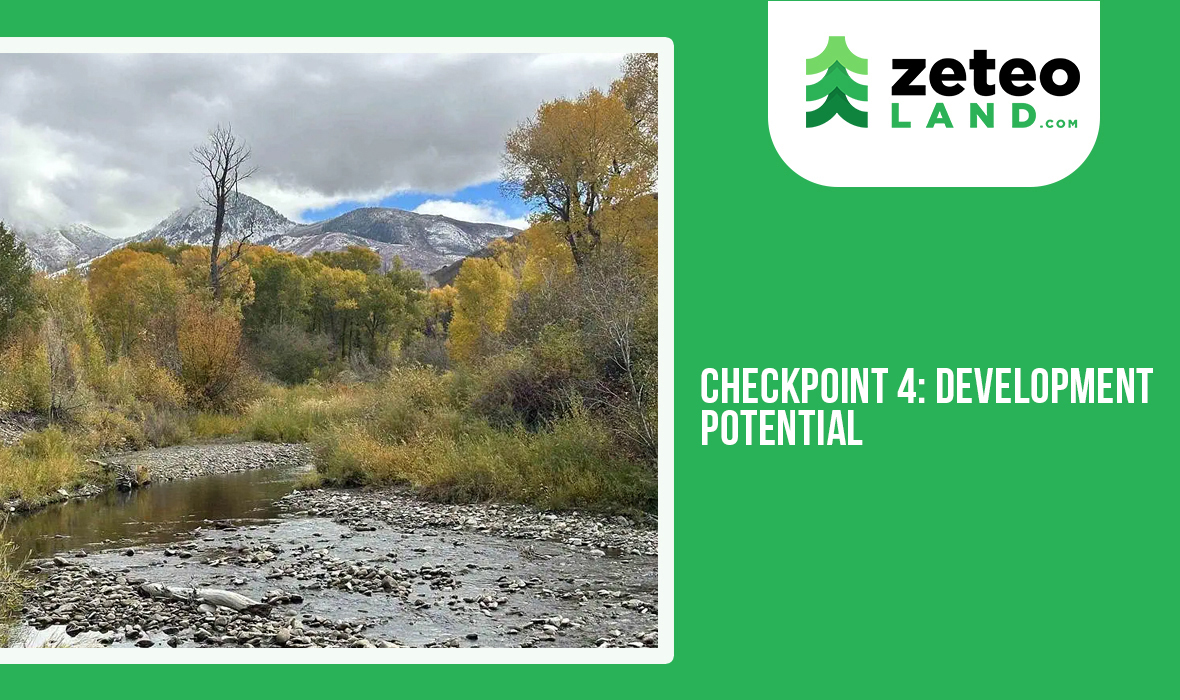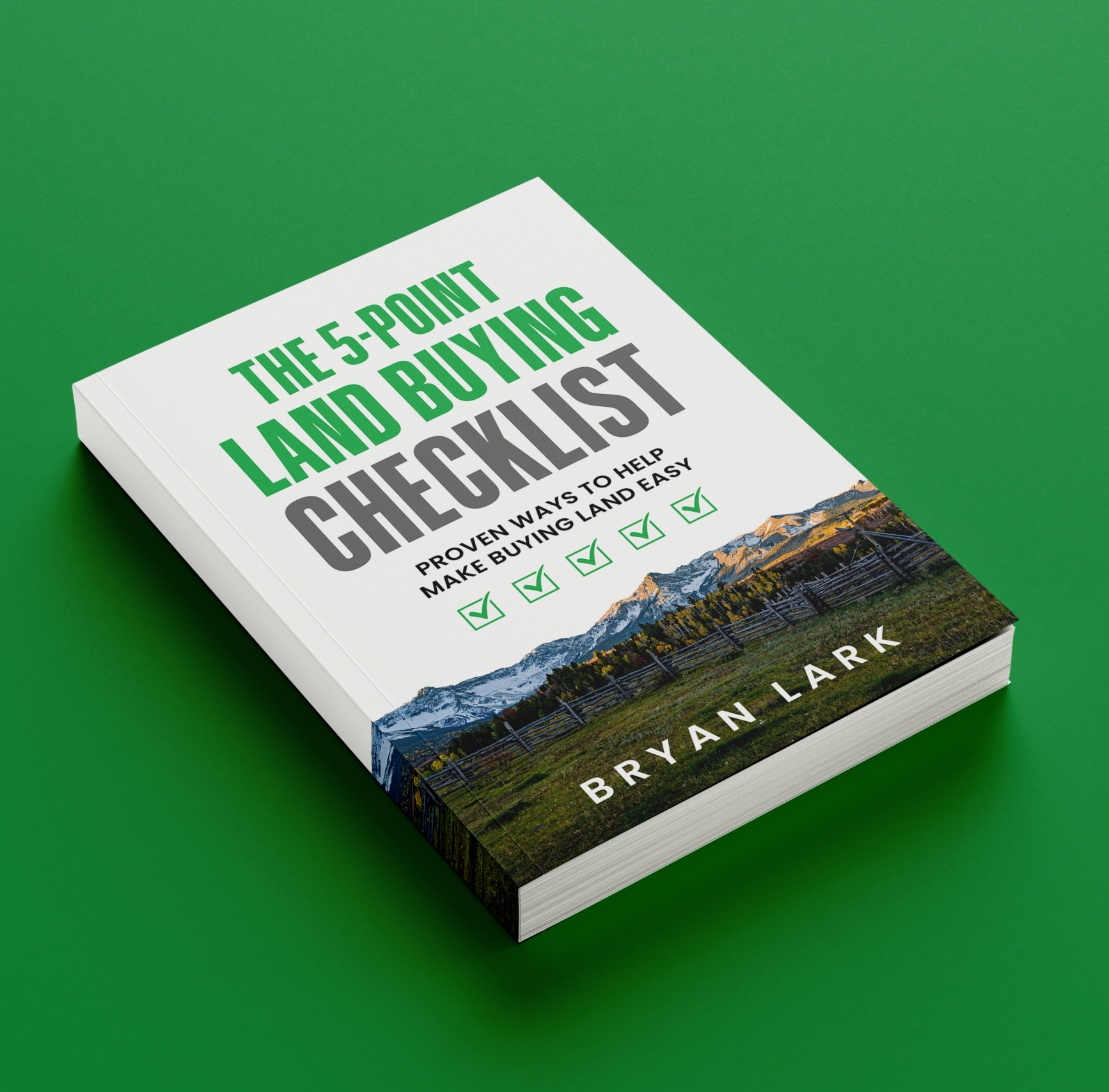If I offered you 5,000 acres for a mere $10,000, it might sound like a deal of a lifetime. Yet, the reality is, without considering the property’s layout, you might find yourself stuck with a narrow strip of land where building anything becomes a distant dream. If you want to buy your land in Arizona or invest your savings to buy land in Colorado, you are at the right place. Welcome to the third checkpoint of our 5-Point Land Buying Checklist – Layout. In this exploration, we’ll unravel the critical role that property dimensions, shapes, and setbacks play in shaping your land ownership dreams.
The Dimensions Dilemma: Beyond Acreage Counts
Acreage is the currency of land, but its dimensions hold the true value. Imagine the potential pitfall of purchasing 5,000 acres that are just 3 feet wide. While this might be an extreme and exaggerated example, it serves as a stark reminder of the importance of considering layout alongside acreage.
Ideal Layout: The Aesthetics of Form and Function
In the ideal scenario, a land layout mirrors the simplicity of a square or rectangle. Head east, and you may encounter more irregular, curvy property lines; venture west, and you’ll notice a preference for straight lines. It seems the wisdom of straight lines prevailed during our westward expansion.
A layout with straight lines offers more than just visual appeal. Fencing becomes a more cost-effective endeavor, surveys are simpler, and determining setback requirements transforms into a straightforward task. Call it a personal preference, but there’s an inherent satisfaction in the orderliness of a straight-line layout. However, life isn’t always that simple. It’s not necessarily a drawback, as long as it aligns with your purpose for the land.
Understanding Setbacks: The Unsung Heroes of Layout Planning
The lay of the land isn’t just about its physical form. Setbacks play a pivotal role in determining its functionality. Picture this: a property a mere 55 feet wide, and the county mandates a 30-foot setback for all structures and improvements. Suddenly, your dream property turns into a spatial puzzle with limited or even impossible building possibilities.
To navigate this potential obstacle, prospective landowners must consult plat maps and survey documents to decipher setback regulations. Understanding these setbacks is as crucial as comprehending the lay of the land itself. It’s the difference between envisioning your dream home on your property or facing the harsh reality of limitations imposed by setback requirements.
The Purposeful Layout: Aligning Land Configuration with Your Goals
A purposeful layout is more than just the physical arrangement of land; it is the blueprint that transforms your vision into a tangible reality. For those seeking a serene retreat, the layout may prioritize secluded areas, scenic viewpoints, and natural buffers to create a tranquil environment. In contrast, a thriving farm demands a thoughtfully designed layout that accommodates efficient irrigation, crop rotation, and livestock management.
The significance of the layout lies in its alignment with your objectives for the property. Whether you’re envisioning a serene retreat, a bustling farm, or a recreational haven, the layout plays a pivotal role in realizing these aspirations.
Tailoring Layout to Your Goals
Consider the purpose behind your land acquisition. A square or rectangular layout may be ideal for a straightforward development project, such as a farm or residential area. Conversely, a curvier layout may offer privacy or aesthetic appeal, catering to a more secluded retreat.
Budget Considerations: The Practical Side of Layout
Budgets often dictate the feasibility of land projects. An irregular layout may incur higher costs for fencing, surveys, and compliance with setback requirements. Acknowledging these potential expenses upfront allows for better financial planning and ensures that the layout aligns with your budgetary constraints.
The Art of Balance: Weaving Aesthetics and Practicality
As with any art form, finding the perfect balance is key. A property’s layout isn’t merely about its aesthetic appeal; it’s about striking the right balance between visual appeal and practical functionality. The straight-line simplicity might be visually pleasing, but it’s essential to weigh its benefits against the potential constraints it may pose.
Personal Experiences: Learning from Bryan’s Journey
Owning land with curvy and crooked lines offers a valuable lesson. It’s a testament to the versatility of land layouts and their adaptability to various purposes. The key lies in understanding your goals and evaluating how the layout will either bolster or impede your journey towards those objectives.
Foreseeing Future Challenges: The Neighbor Factor
Just as we’ve learned from the possibility of neighbors impacting your land’s enjoyment, the layout’s adaptability also hinges on the adjacent properties. Knowing your neighbors and their intentions for their land becomes another layer of foresight. It’s an additional consideration that, when taken into account, ensures your land layout stands resilient against potential external influences.
If you want to buy land in Arizona or buy land in Colorado, understanding your neighbors and their land-use plans adds a crucial dimension to your own land layout strategy. Open communication fosters a cooperative environment, minimizing the risk of conflicts over property boundaries, noise, or incompatible land practices. This holistic approach to land planning not only fortifies your property against external impacts but also cultivates a sense of community, contributing to a more harmonious and enjoyable land ownership experience.
Conclusion: Crafting Your Land’s Identity Through Thoughtful Layout
In conclusion, layout is more than just the blueprint of your property; it’s the manifestation of your dreams. Just remember that a purposeful layout aligned with your goals is what will make you happy 10-20 years from now.
If you really want to transform your investment into a legacy, remember that the canvas you choose will shape not only the physical blueprint but also the potential and practicality of your dreams.
Stay tuned for our next exploration into the fourth checkpoint – Development Potential – where we explore the hidden potential for you to buy land in Colorado or to buy land in Arizona for future growth and possibilities.

